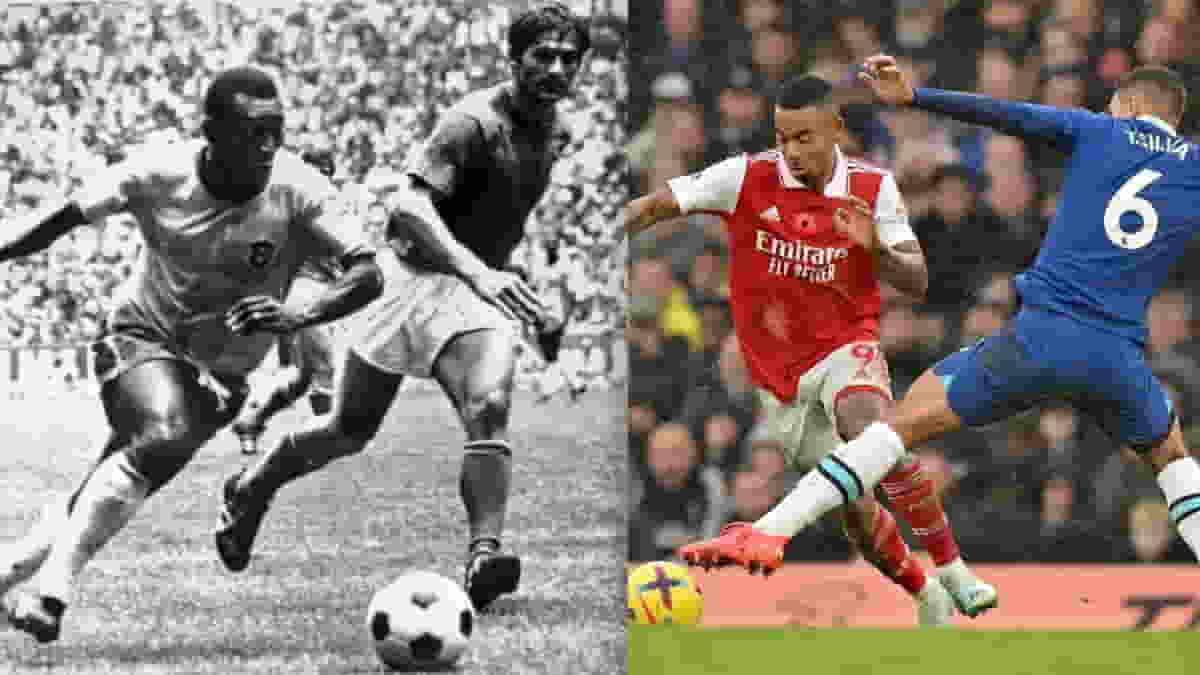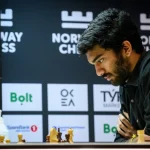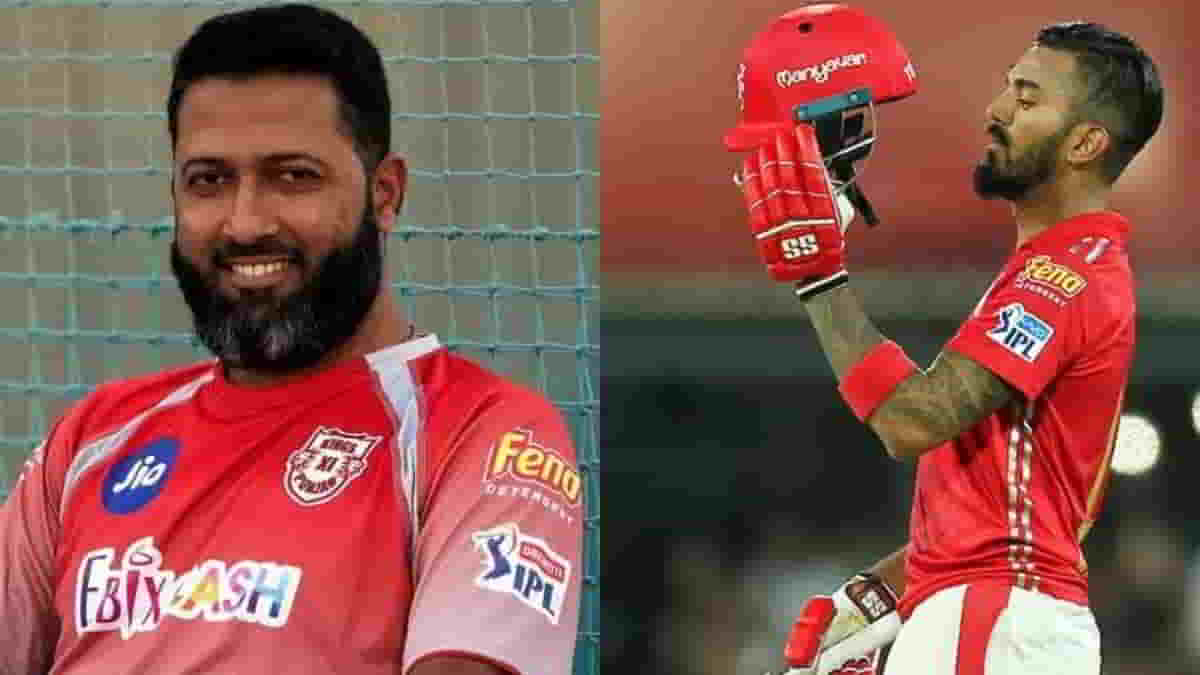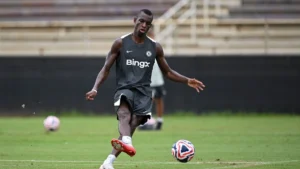Since its inception in China during the Han dynasty, which lasted from 206 BC to 220 AD, the game of football has undergone significant development. Over a century ago, in 1863, England became the birthplace of modern football. After rugby football and association football, which were once considered to be the same thing, split apart, the Football Association was established as the first recognised governing body for the sport. In contrast to today, when modern football players are passionate about the game and train themselves hard to fight for championships, the game of football was difficult 50 years ago due to the physical demands and rugged terrain. There was also no adequate training for the players.
In this article, we will take a look at how football has changed over time and the elements that have improved players’ stamina and endurance on the pitch.
History of Football
Although history books claim that people have been kicking a ball around on fields for thousands of years, not all of those games are recognised as what we now refer to as football. Football was first mentioned in military manuals in China in the third century BC. This is the earliest known instance of the game. Tsu’ Chu was a game performed during the Han Dynasty that included kicking a ball through a 30 to 40-cm opening and into what would today be a goal made of canes with a net attached.
History of Football in India
The history of football in India began with the British introducing the sport to the subcontinent just before India attained independence. The first football game in the nation was played in 1854, and it was hosted by the “Calcutta Club of Civilians” and the “Gentlemen of Barrackpore.” The initial football team to be created in India was known as “Calcutta FC.” The Dalhousie Club, Traders Club, and Naval Volunteers Club, among others, were created in the years that followed. Women’s football in India was administered by the Women’s Football Federation of India (WFFI) up until the WFFI turned over leadership to the AIFF in the early 1990s. Similar to the men’s game, the first women’s game pioneers were from the state of West Bengal.
Evolution of Football
Similar variations of rough-and-tumble Gaelic football were widespread in Europe during medieval times and eventually evolved into the precursors of both football and rugby. The oldest records of a recognisable predecessor to modern Gaelic football come from a game in County Meath in 1670, where catching and kicking the ball were permitted, even though references to Irish football were essentially nonexistent before the 1600s. Throughout much of the first 40 years of the 19th century, football was a thriving sport. The cross-country variation known as caid was then popular in Kerry and remained so throughout the century. Early in the 18th century, a six-a-side form of the game was played in Dublin. A century later, there are descriptions of matches between county sides.
Since the Gaelic Athletic Association was established in 1884 in the pool hall of a Tipperary hotel, Gaelic games have been played in the contemporary period. The first official codes and unified organization of the old Irish games were started there under the visionary leadership of Michael Cusack and Maurice Davin, sowing the seeds for what would grow to be Ireland’s largest athletic association. Gaelic football as we know it now is very different from the original sport that the Gaelic Athletic Association first defined. In varying degrees, the fundamental idea of man-on-man competitions for the ball inside the boundaries of a positional game has been expanded upon and weakened over time.
Evolution of Football Players
A concentration on keeping possession has led to the movement of the ball more deliberately, offering an obvious advantage to a teammate, while the physical conditioning of the modern player has allowed him to move rapidly into space to grab possession of the ball, in many cases unchallenged. The latter trend has also led to a decrease in the use of many of the less controllable talents in both games, such as the drop kick in Gaelic football because doing so frequently makes the game more competitive or results in the loss of possession entirely. The emphasis on keeping possession once you have it has adversely led to the adoption of defensive strategies meant to concentrate players in front of the goal or around the ball while it is not in action.
Football has altered and evolved for more than a century since it first appeared. However, there have never been more changes in this time than in the last 20 years or so. Players today must be more physically fit since they must travel more than 50% farther than they did in the late 1960s. Players today not only have to run more, but they also have to go much faster.
For instance, since 2002, the number of sprints and other high-intensity playing activities has almost doubled. The amount of time the ball is in play during a 90-minute football game has increased by over 15 minutes since 1990, or 17%. Players must therefore be more athletic, quicker, more nimble, and require greater mental attention to perform at the greatest level. They also need to be fitter in terms of endurance. Midfielders were rated as the hardest-working players in the Premier League in 2005–06, with right midfielders like Gerrard being the most motivated. The average distance travelled by players in this position per game was 11.49km (seven miles and 246 yards), which was not far behind Gerrard’s numbers.
From 627 per team per match in 2002–03 to 1,209 in 2005–06, high-intensity activities—runs made by players at a speed of three-quarters of a sprint or faster—have increased. Over the same period, players’ sprinting distance has grown by 40%. A sprint is defined as a run that is completed more quickly than seven meters per second, or roughly 14 seconds for 100 meters.\
Also Read: Step-by-Step Guide to Make Your Career in Sprint and Participate in International Competitions
“Get more sports news, cricket news, and football updates, log on to sportsdigest.in. Follow us on Facebook or Twitter and Subscribe to our YouTube Channel.”



























